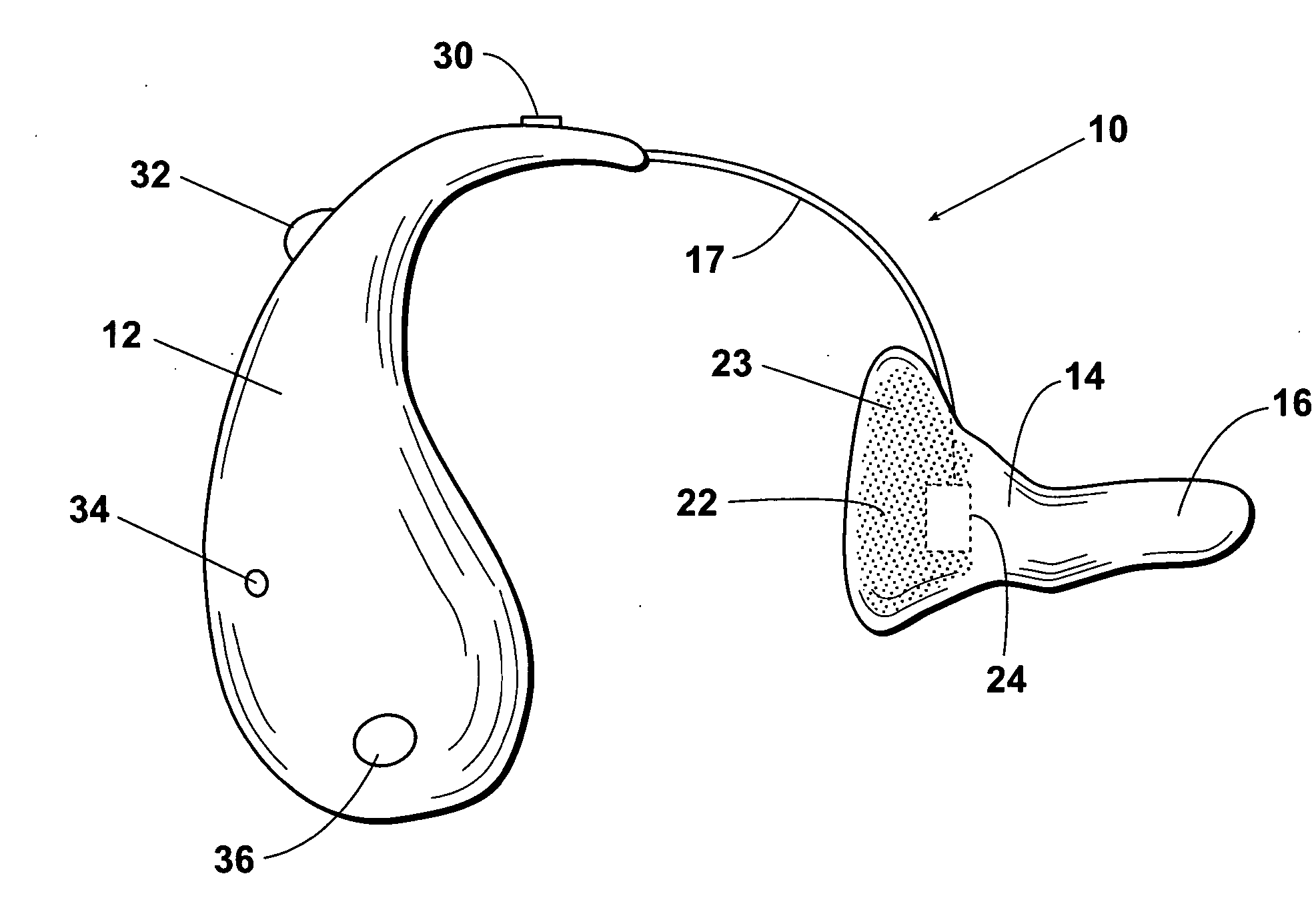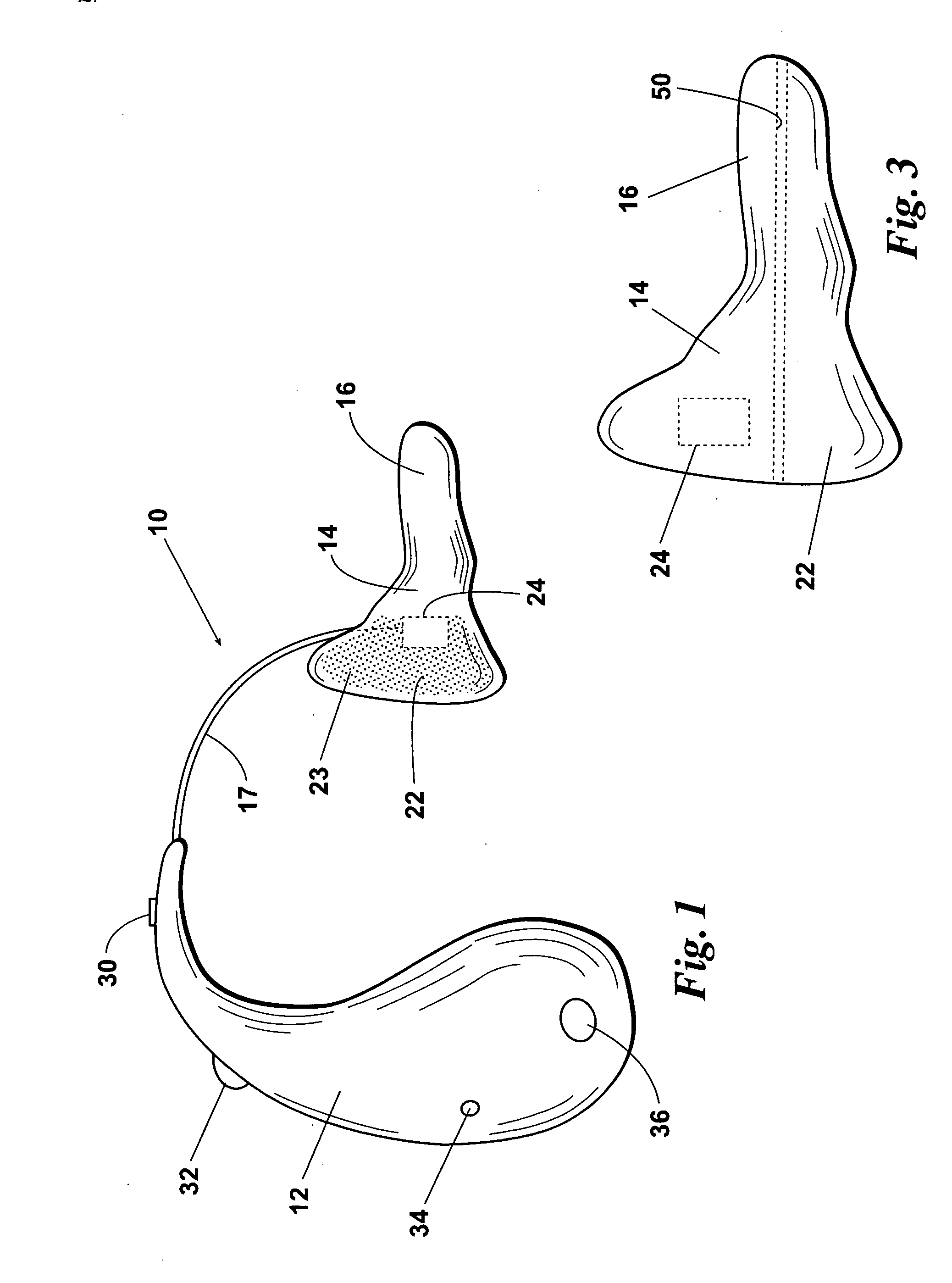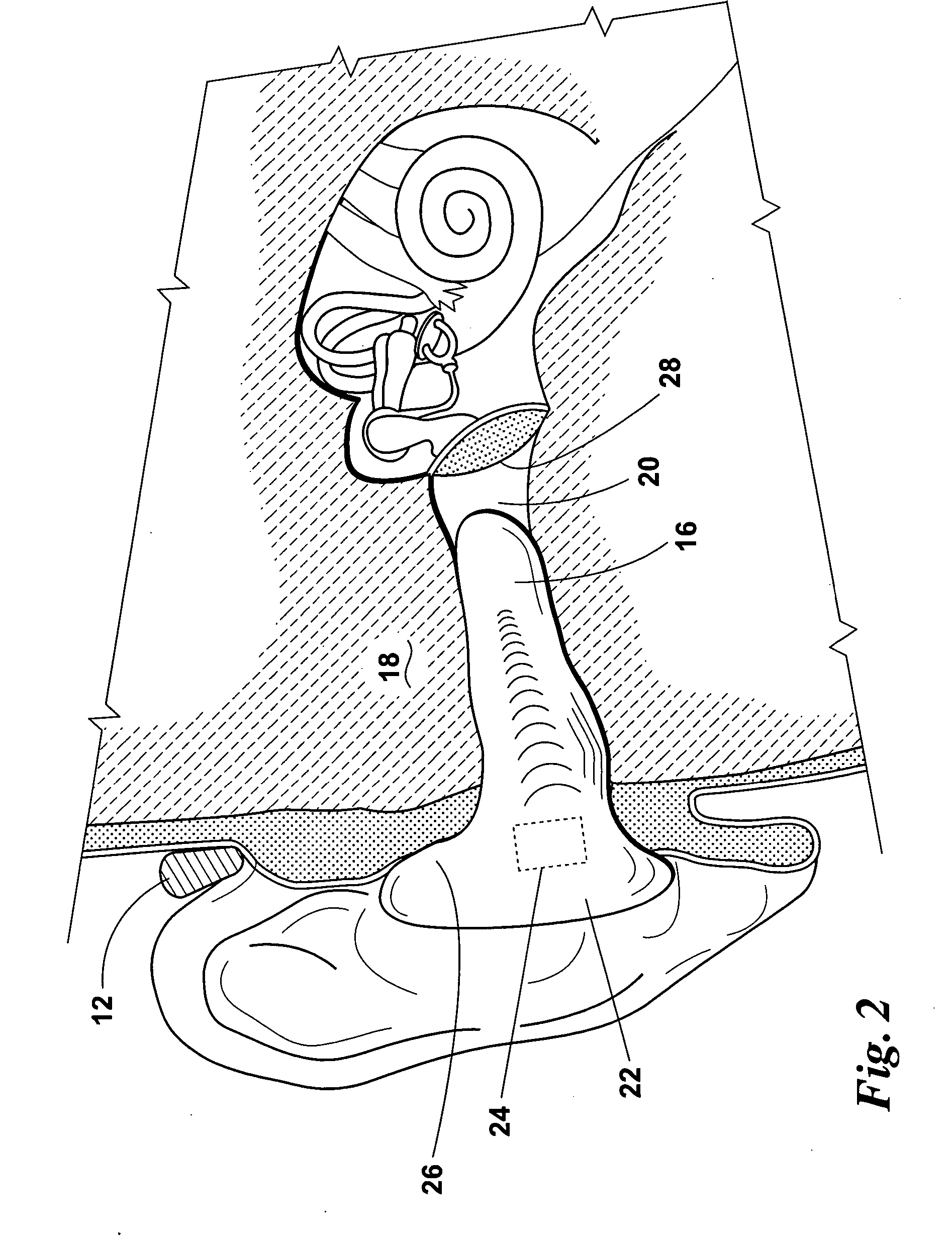Bone conduction hearing assistance device
a hearing aid and bone conduction technology, applied in the field of hearing aids, can solve the problems of inability to receive vibrators in patients with ear canals too small to receive them, and all these approaches have significant disadvantages, so as to reduce or eliminate the feedback of vibrators
- Summary
- Abstract
- Description
- Claims
- Application Information
AI Technical Summary
Benefits of technology
Problems solved by technology
Method used
Image
Examples
Embodiment Construction
)
[0013] Turning now to the drawings wherein like reference characters indicate like or similar parts throughout, FIGS. 1 and 2 illustrate a bone conduction hearing aid 10 in accordance with the invention. The hearing aid 10 preferably includes a behind-the-ear (BTE) member 12 for carrying elements needed to receive and process acoustic vibrations, and an in-the-ear (ITE) member 14 configured to receive signals processed by the BTE member 12 and convert those signals to corresponding vibrations that are conducted by the mastoid bone to a cochlea of the patient or user. BTE member 12 is in electronic communication with ITE member 16. In a preferred embodiment as shown in FIG. 1, the two members 12, 16 are connected by an electrically conductive line 17. Alternatively, transmitter transmits processed signals to ITE member 16 wirelessly, such as by radio frequency.
[0014] With continued reference to FIGS. 1 and 2, ITE member 14 includes an insertion portion 16 for being inserted into th...
PUM
 Login to View More
Login to View More Abstract
Description
Claims
Application Information
 Login to View More
Login to View More - R&D
- Intellectual Property
- Life Sciences
- Materials
- Tech Scout
- Unparalleled Data Quality
- Higher Quality Content
- 60% Fewer Hallucinations
Browse by: Latest US Patents, China's latest patents, Technical Efficacy Thesaurus, Application Domain, Technology Topic, Popular Technical Reports.
© 2025 PatSnap. All rights reserved.Legal|Privacy policy|Modern Slavery Act Transparency Statement|Sitemap|About US| Contact US: help@patsnap.com



